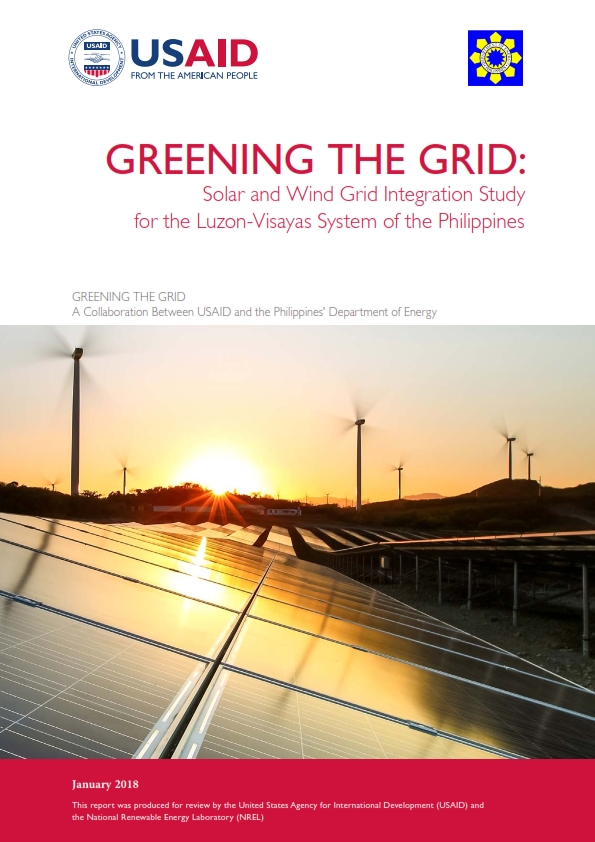
Executive Summary
The Republic of the Philippines is home to abundant solar, wind, and other renewable energy (RE) resources that contribute to the national government’s vision to ensure sustainable, secure, sufficient, accessible, and affordable energy. Because solar and wind energy increase variability and uncertainty in the power system, significant generation from these resources necessitates an evolution in power system planning and operation. To support Philippine power sector planners in evaluating the impacts and opportunities associated with achieving high levels of variable RE penetration, the Department of Energy of the Philippines (DOE) and the United States Agency for International Development (USAID) have spearheaded this study, which seeks to characterize the operational impacts of reaching high solar and wind targets in the Philippine power system, with a specific focus on the integrated Luzon-Visayas grids.1
This study highlights five key findings:
-
RE targets of 30% and 50% are achievable in the power system as planned for 2030. Achieving these high RE targets will likely involve changes to how the power system is operated.
-
System flexibility will contribute to cost-effective integration of variable RE.
-
Achieving high levels of solar and wind integration will require coordinated planning of generation and transmission development.
-
Strategic, economic curtailments of solar and wind energy can enhance system flexibility.
-
Reserve provision may become an issue regardless of RE penetration. Additional qualified reserve-providing facilities (QFs), including from solar and wind generators, and/or enhanced sharing of ancillary services between the Luzon and Visayas interconnections will likely be needed.
Click to view the full report
1 This study was formalized via DOE’s issuance of Department Circular 2015-11-0017, “Creating a Technical Advisory Committee and Modeling Working Group to Enable Variable Renewable Energy Integration and Installation Targets” (DOE 2015).

